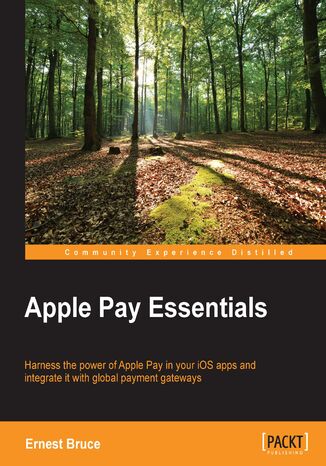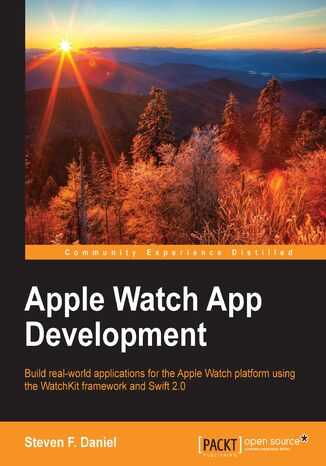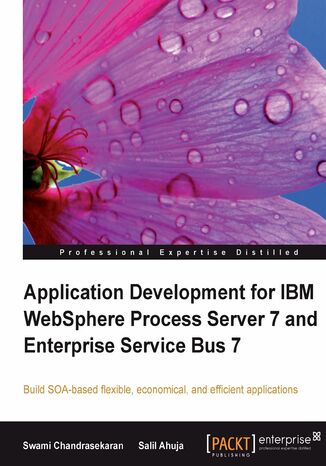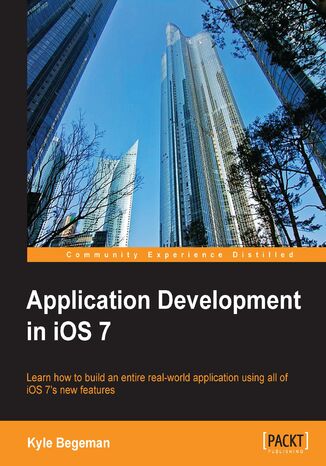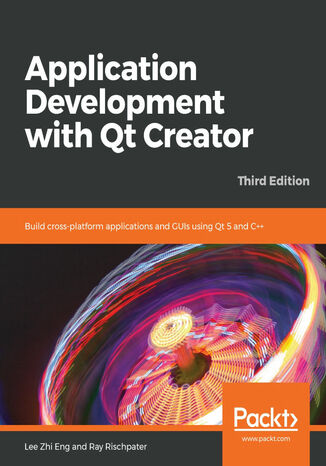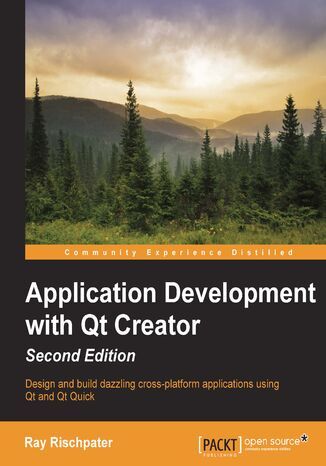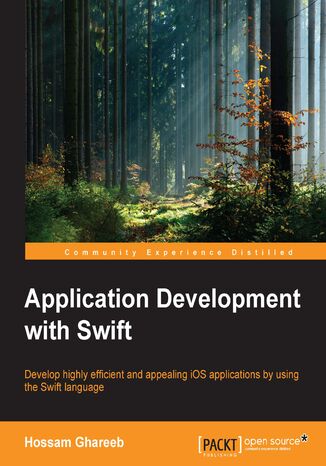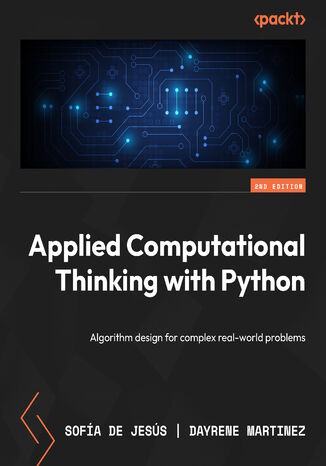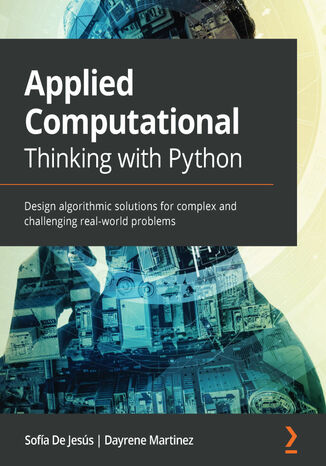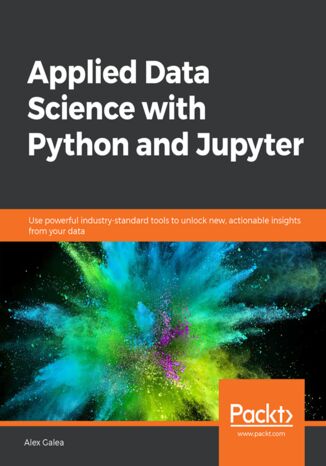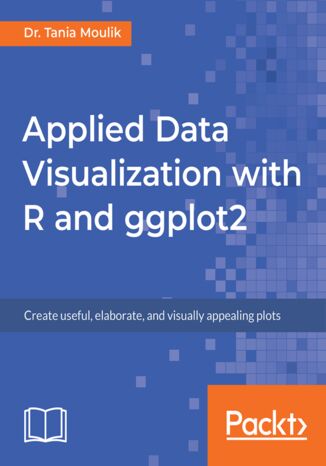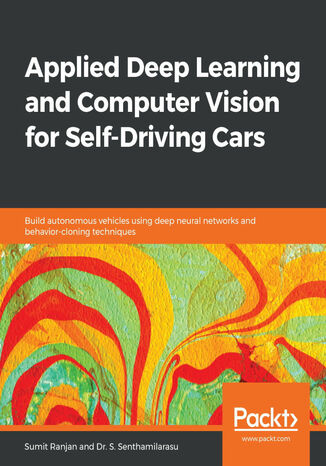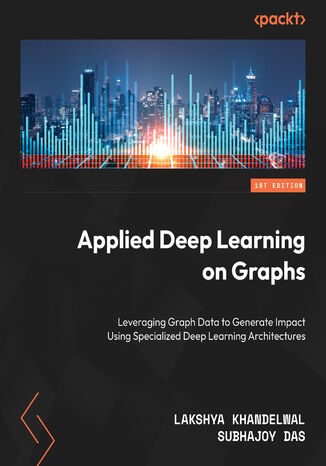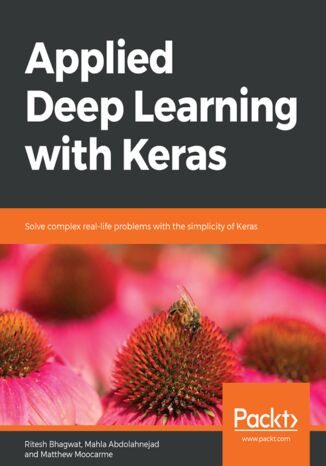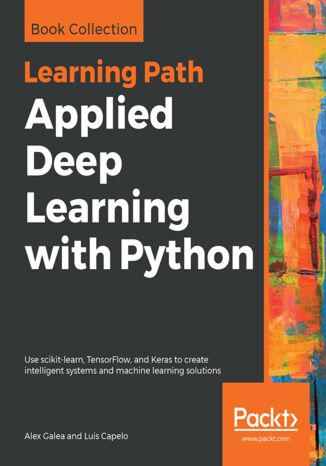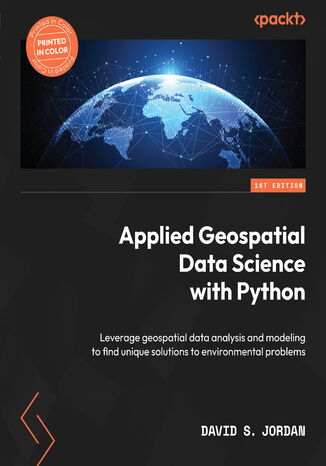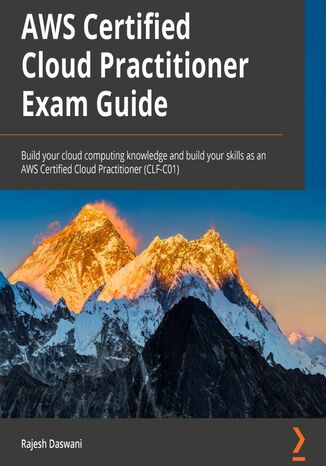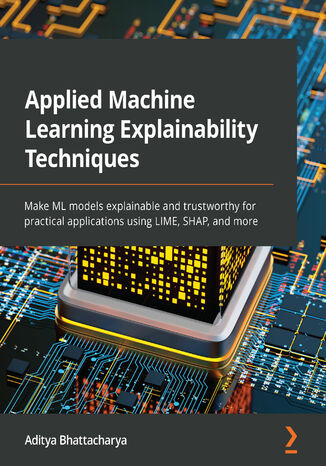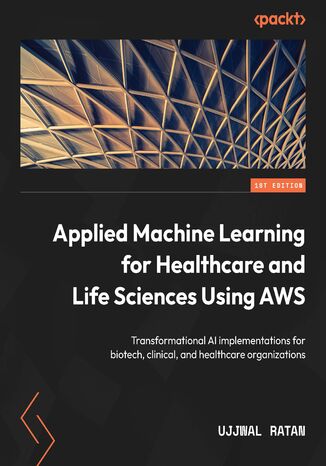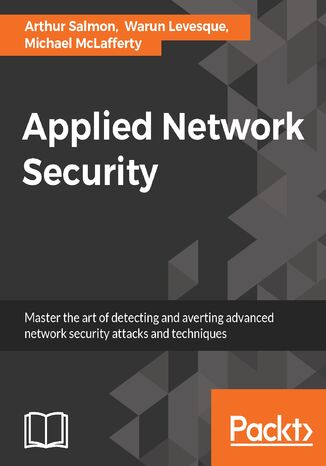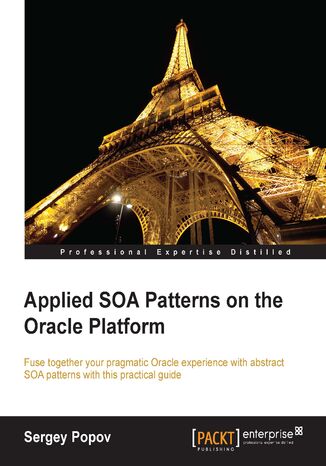Категорії
Електронні книги
-
Бізнес та економіка
- Біткойн
- Ділова жінка
- Коучинг
- Контроль
- Електронний бізнес
- Економіка
- Фінанси
- Фондова біржа та інвестиції
- Особисті компетенції
- Комп'ютер в офісі
- Комунікація та переговори
- Малий бізнес
- Маркетинг
- Мотивація
- Мультимедійне навчання
- Нерухомість
- Переконання та НЛП
- Податки
- Соціальна політика
- Порадники
- Презентації
- Лідерство
- Зв'язки з громадськістю
- Звіти, аналізи
- Секрет
- Соціальні засоби комунікації
- Продаж
- Стартап
- Ваша кар'єра
- Управління
- Управління проектами
- Людські ресурси (HR)
-
Для дітей
-
Для молоді
-
Освіта
-
Енциклопедії, словники
-
Електронна преса
- Architektura i wnętrza
- Безпека життєдіяльності
- Biznes i Ekonomia
- Будинок та сад
- Електронний бізнес
- Ekonomia i finanse
- Езотерика
- Фінанси
- Особисті фінанси
- Бізнес
- Фотографія
- Інформатика
- Відділ кадрів та оплата праці
- Для жінок
- Комп'ютери, Excel
- Бухгалтерія
- Культура та література
- Наукові та академічні
- Охорона навколишнього середовища
- Впливові
- Освіта
- Податки
- Подорожі
- Психологія
- Релігія
- Сільське господарство
- Ринок книг і преси
- Транспорт та спедиція
- Здоров'я та краса
-
Історія
-
Інформатика
- Офісні застосунки
- Бази даних
- Біоінформатика
- Бізнес ІТ
- CAD/CAM
- Digital Lifestyle
- DTP
- Електроніка
- Цифрова фотографія
- Комп'ютерна графіка
- Ігри
- Хакування
- Hardware
- IT w ekonomii
- Наукові пакети
- Шкільні підручники
- Основи комп'ютера
- Програмування
- Мобільне програмування
- Інтернет-сервери
- Комп'ютерні мережі
- Стартап
- Операційні системи
- Штучний інтелект
- Технологія для дітей
- Вебмайстерність
-
Інше
-
Іноземні мови
-
Культура та мистецтво
-
Шкільні читанки
-
Література
- Антології
- Балада
- Біографії та автобіографії
- Для дорослих
- Драми
- Журнали, щоденники, листи
- Епос, епопея
- Нарис
- Наукова фантастика та фантастика
- Фельєтони
- Художня література
- Гумор, сатира
- Інше
- Класичний
- Кримінальний роман
- Нехудожня література
- Художня література
- Mity i legendy
- Лауреати Нобелівської премії
- Новели
- Побутовий роман
- Okultyzm i magia
- Оповідання
- Спогади
- Подорожі
- Оповідна поезія
- Поезія
- Політика
- Науково-популярна
- Роман
- Історичний роман
- Проза
- Пригодницька
- Журналістика
- Роман-репортаж
- Romans i literatura obyczajowa
- Сенсація
- Трилер, жах
- Інтерв'ю та спогади
-
Природничі науки
-
Соціальні науки
-
Шкільні підручники
-
Науково-популярна та академічна
- Археологія
- Bibliotekoznawstwo
- Кінознавство / Теорія кіно
- Філологія
- Польська філологія
- Філософія
- Finanse i bankowość
- Географія
- Економіка
- Торгівля. Світова економіка
- Історія та археологія
- Історія мистецтва і архітектури
- Культурологія
- Мовознавство
- літературні студії
- Логістика
- Математика
- Ліки
- Гуманітарні науки
- Педагогіка
- Навчальні засоби
- Науково-популярна
- Інше
- Психологія
- Соціологія
- Театральні студії
- Богослов’я
- Економічні теорії та науки
- Transport i spedycja
- Фізичне виховання
- Zarządzanie i marketing
-
Порадники
-
Ігрові посібники
-
Професійні та спеціальні порадники
-
Юридична
- Безпека життєдіяльності
- Історія
- Дорожній кодекс. Водійські права
- Юридичні науки
- Охорона здоров'я
- Загальне, компендіум
- Академічні підручники
- Інше
- Закон про будівництво і житло
- Цивільне право
- Фінансове право
- Господарське право
- Господарське та комерційне право
- Кримінальний закон
- Кримінальне право. Кримінальні злочини. Кримінологія
- Міжнародне право
- Міжнародне та іноземне право
- Закон про охорону здоров'я
- Закон про освіту
- Податкове право
- Трудове право та законодавство про соціальне забезпечення
- Громадське, конституційне та адміністративне право
- Кодекс про шлюб і сім'ю
- Аграрне право
- Соціальне право, трудове право
- Законодавство Євросоюзу
- Промисловість
- Сільське господарство та захист навколишнього середовища
- Словники та енциклопедії
- Державні закупівлі
- Управління
-
Путівники та подорожі
- Африка
- Альбоми
- Південна Америка
- Центральна та Північна Америка
- Австралія, Нова Зеландія, Океанія
- Австрія
- Азії
- Балкани
- Близький Схід
- Болгарія
- Китай
- Хорватія
- Чеська Республіка
- Данія
- Єгипет
- Естонія
- Європа
- Франція
- Гори
- Греція
- Іспанія
- Нідерланди
- Ісландія
- Литва
- Латвія
- Mapy, Plany miast, Atlasy
- Мініпутівники
- Німеччина
- Норвегія
- Активні подорожі
- Польща
- Португалія
- Інше
- Przewodniki po hotelach i restauracjach
- Росія
- Румунія
- Словаччина
- Словенія
- Швейцарія
- Швеція
- Світ
- Туреччина
- Україна
- Угорщина
- Велика Британія
- Італія
-
Психологія
- Філософія життя
- Kompetencje psychospołeczne
- Міжособистісне спілкування
- Mindfulness
- Загальне
- Переконання та НЛП
- Академічна психологія
- Психологія душі та розуму
- Психологія праці
- Relacje i związki
- Батьківство та дитяча психологія
- Вирішення проблем
- Інтелектуальний розвиток
- Секрет
- Сексуальність
- Спокушання
- Зовнішній вигляд та імідж
- Філософія життя
-
Релігія
-
Спорт, фітнес, дієти
-
Техніка і механіка
Аудіокниги
-
Бізнес та економіка
- Біткойн
- Ділова жінка
- Коучинг
- Контроль
- Електронний бізнес
- Економіка
- Фінанси
- Фондова біржа та інвестиції
- Особисті компетенції
- Комунікація та переговори
- Малий бізнес
- Маркетинг
- Мотивація
- Нерухомість
- Переконання та НЛП
- Податки
- Соціальна політика
- Порадники
- Презентації
- Лідерство
- Зв'язки з громадськістю
- Секрет
- Соціальні засоби комунікації
- Продаж
- Стартап
- Ваша кар'єра
- Управління
- Управління проектами
- Людські ресурси (HR)
-
Для дітей
-
Для молоді
-
Освіта
-
Енциклопедії, словники
-
Електронна преса
-
Історія
-
Інформатика
-
Інше
-
Іноземні мови
-
Культура та мистецтво
-
Шкільні читанки
-
Література
- Антології
- Балада
- Біографії та автобіографії
- Для дорослих
- Драми
- Журнали, щоденники, листи
- Епос, епопея
- Нарис
- Наукова фантастика та фантастика
- Фельєтони
- Художня література
- Гумор, сатира
- Інше
- Класичний
- Кримінальний роман
- Нехудожня література
- Художня література
- Mity i legendy
- Лауреати Нобелівської премії
- Новели
- Побутовий роман
- Okultyzm i magia
- Оповідання
- Спогади
- Подорожі
- Поезія
- Політика
- Науково-популярна
- Роман
- Історичний роман
- Проза
- Пригодницька
- Журналістика
- Роман-репортаж
- Romans i literatura obyczajowa
- Сенсація
- Трилер, жах
- Інтерв'ю та спогади
-
Природничі науки
-
Соціальні науки
-
Науково-популярна та академічна
-
Порадники
-
Професійні та спеціальні порадники
-
Юридична
-
Путівники та подорожі
-
Психологія
- Філософія життя
- Міжособистісне спілкування
- Mindfulness
- Загальне
- Переконання та НЛП
- Академічна психологія
- Психологія душі та розуму
- Психологія праці
- Relacje i związki
- Батьківство та дитяча психологія
- Вирішення проблем
- Інтелектуальний розвиток
- Секрет
- Сексуальність
- Спокушання
- Зовнішній вигляд та імідж
- Філософія життя
-
Релігія
-
Спорт, фітнес, дієти
-
Техніка і механіка
Відеокурси
-
Бази даних
-
Big Data
-
Biznes, ekonomia i marketing
-
Кібербезпека
-
Data Science
-
DevOps
-
Для дітей
-
Електроніка
-
Графіка / Відео / CAX
-
Ігри
-
Microsoft Office
-
Інструменти розробки
-
Програмування
-
Особистісний розвиток
-
Комп'ютерні мережі
-
Операційні системи
-
Тестування програмного забезпечення
-
Мобільні пристрої
-
UX/UI
-
Веброзробка, Web development
-
Управління
Подкасти
Apple Pay, one of the most talked about offerings of the latest iOS 9 release, is a digital wallet and electronic payment system developed by Apple Inc. Paying in stores or within apps has never been easier or safer. Gone are the days of searching for your wallet, and the wasted moments finding the right card! Now you can use your credit cards and rewards cards with just a touch. It allows payment to merchants, using Near field Communication (NFC), and within iOS apps. Implementing Apple Pay within apps for payment is a bit tricky, but our book solves this problem for you.Whether you are a brand new iOS app developer or a seasoned expert, this book arms you with necessary skills to successfully implement Apple Pay in your online-payment workflow.Whether you are a brand new iOS app developer or a seasoned expert, this book arms you with the necessary skills to successfully implement Apple Pay. We start off by teaching you how to obtain the certificates necessary to encrypt customers’ payment information. We will use Xcode and Objective C for the interface and Node.js for server side code. You will then learn how to determine whether the customer can use Apple Pay, and how to create payment requests. You will come to grips with designing a payment-processor program to interact with the payment gateway. Finally, we take a look at a business-focused view of Apple Pay protocols and classes. By the end of this book, you will be able to build a fully functional Apple Pay-integrated iOS app
Apple Watch App Development. Click here to enter text
With the increasing amount of new wearable devices hitting the market, wearables are the next wave of mobile technology. With the release of Apple's WatchKit SDK, a whole new world of exciting development possibilities hasopened up.Apple Watch App Development introduces you to the architecture and limitations of the Apple Watch platform, followed by an in-depth look at how to work with Xcode playgrounds. Here, we'll introduce you to the Swift programming language so you can quickly begin developing apps for the Apple Watch platform with the WatchKit framework and the Xcode Development IDE. We then discuss more advanced topics such as Notifiations, Glances, Closures, Tuples, Protocols, Apple pay, and using Swift playgrounds, with each concept backed up with example code that demonstrates how to properly execute it. We also show you how to package and deploy your Watch application to the Apple AppStore.By the end of this book, you will have a good understanding of how to develop apps for Apple Watch platform using the WatchKit framework and Swift 2.0.
Salil Ahuja, Swami Chandrasekaran
By adopting an SOA approach in Business Process Management (BPM), you can make your application flexible, reusable, and adaptable to new developments. The SOA approach also gives you the potential to lower costs (from reuse), and increase revenue (from adaptability and flexibility). However, integrating basic SOA constructs (such as Process, Business Services, and Components) and core building blocks of BPM (such as Process Modeling and Enterprise Service Bus) in a real-world application can be challenging.This book introduces basic concepts of Business Integration, SOA Fundamentals, and SOA Programming Model and implements them in numerous examples. It guides you to building an Order Management application from scratch using the principles of Business Process Management and Service Oriented Architecture and using WebSphere Process Server (WPS) and WebSphere Enterprise Service Bus (WESB). The various detailed aspects, features, and capabilities of the product are conveyed through examplesWe begin with essential concepts on Business Integration, SOA Fundamentals and SOA Programming Model. Then we set up the development environment to build your first Hello Process and Hello Mediation applications.Gradually, we build an SOA-based Order Management Application. We cover important aspects and functions of WPS and WESB with numerous practical examples. We show how to analyze your application's business requirements and check if an SOA approach is appropriate for your project. Then you do a top-down decomposition of your application and identify its use cases, business processes, and services. Having built the SOA Application, we introduce you to various non-functional topics, including: Administration, Governance, Management, Monitoring, and Security. We also discuss deployment topologies for WPS and WESB, performance tuning, and recommended practices.
Qt is a powerful development framework that serves as a complete toolset for building cross-platform applications, helping you reduce development time and improve productivity. Completely revised and updated to cover C++17 and the latest developments in Qt 5.12, this comprehensive guide is the third edition of Application Development with Qt Creator.You'll start by designing a user interface using Qt Designer and learn how to instantiate custom messages, forms, and dialogues. You'll then understand Qt's support for multithreading, a key tool for making applications responsive, and the use of Qt's Model-View-Controller (MVC) to display data and content. As you advance, you'll learn to draw images on screen using Graphics View Framework and create custom widgets that interoperate with Qt Widgets. This Qt programming book takes you through Qt Creator's latest features, such as Qt Quick Controls 2, enhanced CMake support, a new graphical editor for SCXML, and a model editor. You'll even work with multimedia and sensors using Qt Quick, and finally develop applications for mobile, IoT, and embedded devices using Qt Creator.By the end of this Qt book, you'll be able to create your own cross-platform applications from scratch using Qt Creator and the C++ programming language.
Benedikt Bergmann, Scott Durow
Managing Power Platform solutions manually can be challenging and time-consuming, as is application lifecycle management (ALM), which encompasses governance, development, and maintenance. This book provides comprehensive coverage of ALM, addressing planning, development, testing, deployment, and maintenance. Drawing on his extensive experience as a Power Platform consultant and Microsoft MVP, Benedikt Bergmann simplifies complex topics, making them accessible and easy to grasp.From planning and designing applications to deploying and maintaining them, this book provides step-by-step instructions, best practices, and real-world examples to effectively manage the entire application lifecycle. You’ll gain insights into optimizing Power Platform's toolbox, including Power Apps, Power Automate, Power Pages, and Power Virtual Agents, for seamless collaboration, agile development, and rapid application delivery. You’ll also implement best practices for version control, code management, and collaboration using the Microsoft Power Platform.By the end of this book, you’ll be equipped with the knowledge and skills to effectively manage the entire application lifecycle, accelerate development cycles, and deliver exceptional solutions with the Microsoft Power Platform.
Stephen Thomas, Stephen W. Thomas, Mike Sexton, Rama Ramani, ...
Every day, architects and developers are asked to solve specific business problems in the most efficient way possible using a broad range of technologies. Packed with real-world examples of how to use the latest Microsoft technologies, this book tackles over a dozen specific use case patterns and provides an applied implementation with supporting code downloads for every chapter.In this book, we guide you through thirteen architectural patterns and provide detailed code samples for the following technologies: Windows Server AppFabric, Windows Azure Platform AppFabric, SQL Server (including Integration Services, Service Broker, and StreamInsight), BizTalk Server, Windows Communication Foundation (WCF), and Windows Workflow Foundation (WF). This book brings together – and simplifies – the information and methodology you need to make the right architectural decisions and use a broad range of the Microsoft platform to meet your requirements. Throughout the book, we will follow a consistent architectural decision framework which considers key business, organizational, and technology factors.The book is broken up into four sections. First, we define the techniques and methodologies used to make architectural decisions throughout the book. In Part I, we provide a set of primers designed to get you up to speed with each of the technologies demonstrated in the book. Part II looks at messaging patterns and includes use cases which highlight content-based routing, workflow, publish/subscribe, and distributed messaging. Part III digs into data processing patterns and looks at bulk data processing, complex events, multi-master synchronization, and more. Finally, Part IV covers performance-related patterns including low latency, failover to the cloud, and reference data caching.
Sofía De Jesús, Dayrene Martinez
Computational thinking helps you to develop logical processing and algorithmic thinking while solving real-world problems across a wide range of domains. It's an essential skill that you should possess to keep ahead of the curve in this modern era of information technology. Developers can apply their knowledge of computational thinking to solve problems in multiple areas, including economics, mathematics, and artificial intelligence.This book begins by helping you get to grips with decomposition, pattern recognition, pattern generalization and abstraction, and algorithm design, along with teaching you how to apply these elements practically while designing solutions for challenging problems. You’ll then learn about various techniques involved in problem analysis, logical reasoning, algorithm design, clusters and classification, data analysis, and modeling, and understand how computational thinking elements can be used together with these aspects to design solutions. Toward the end, you will discover how to identify pitfalls in the solution design process and how to choose the right functionalities to create the best possible algorithmic solutions.By the end of this algorithm book, you will have gained the confidence to successfully apply computational thinking techniques to software development.
Sofía De Jesús, Dayrene Martinez
Computational thinking helps you to develop logical processing and algorithmic thinking while solving real-world problems across a wide range of domains. It's an essential skill that you should possess to keep ahead of the curve in this modern era of information technology. Developers can apply their knowledge of computational thinking to solve problems in multiple areas, including economics, mathematics, and artificial intelligence.This book begins by helping you get to grips with decomposition, pattern recognition, pattern generalization and abstraction, and algorithm design, along with teaching you how to apply these elements practically while designing solutions for challenging problems. You’ll then learn about various techniques involved in problem analysis, logical reasoning, algorithm design, clusters and classification, data analysis, and modeling, and understand how computational thinking elements can be used together with these aspects to design solutions. Toward the end, you will discover how to identify pitfalls in the solution design process and how to choose the right functionalities to create the best possible algorithmic solutions.By the end of this algorithm book, you will have gained the confidence to successfully apply computational thinking techniques to software development.
Getting started with data science doesn't have to be an uphill battle. Applied Data Science with Python and Jupyter is a step-by-step guide ideal for beginners who know a little Python and are looking for a quick, fast-paced introduction to these concepts. In this book, you'll learn every aspect of the standard data workflow process, including collecting, cleaning, investigating, visualizing, and modeling data. You'll start with the basics of Jupyter, which will be the backbone of the book. After familiarizing ourselves with its standard features, you'll look at an example of it in practice with our first analysis. In the next lesson, you dive right into predictive analytics, where multiple classification algorithms are implemented. Finally, the book ends by looking at data collection techniques. You'll see how web data can be acquired with scraping techniques and via APIs, and then briefly explore interactive visualizations.
Applied Data Visualization with R and ggplot2 introduces you to the world of data visualization by taking you through the basic features of ggplot2. To start with, you’ll learn how to set up the R environment, followed by getting insights into the grammar of graphics and geometric objects before you explore the plotting techniques.You’ll discover what layers, scales, coordinates, and themes are, and study how you can use them to transform your data into aesthetical graphs. Once you’ve grasped the basics, you’ll move on to studying simple plots such as histograms and advanced plots such as superimposing and density plots. You’ll also get to grips with plotting trends, correlations, and statistical summaries.By the end of this book, you’ll have created data visualizations that will impress your clients.
Sumit Ranjan, Dr. S. Senthamilarasu
Thanks to a number of recent breakthroughs, self-driving car technology is now an emerging subject in the field of artificial intelligence and has shifted data scientists' focus to building autonomous cars that will transform the automotive industry. This book is a comprehensive guide to use deep learning and computer vision techniques to develop autonomous cars. Starting with the basics of self-driving cars (SDCs), this book will take you through the deep neural network techniques required to get up and running with building your autonomous vehicle. Once you are comfortable with the basics, you'll delve into advanced computer vision techniques and learn how to use deep learning methods to perform a variety of computer vision tasks such as finding lane lines, improving image classification, and so on. You will explore the basic structure and working of a semantic segmentation model and get to grips with detecting cars using semantic segmentation. The book also covers advanced applications such as behavior-cloning and vehicle detection using OpenCV, transfer learning, and deep learning methodologies to train SDCs to mimic human driving.By the end of this book, you'll have learned how to implement a variety of neural networks to develop your own autonomous vehicle using modern Python libraries.
Lakshya Khandelwal, Subhajoy Das
With their combined expertise spanning cutting-edge AI product development at industry giants such as Walmart, Adobe, Samsung, and Arista Networks, Lakshya and Subhajoy provide real-world insights into the transformative world of graph neural networks (GNNs).This book demystifies GNNs, guiding you from foundational concepts to advanced techniques and real-world applications. You’ll see how graph data structures power today’s interconnected world, why specialized deep learning approaches are essential, and how to address challenges with existing methods. You’ll start by dissecting early graph representation techniques such as DeepWalk and node2vec. From there, the book takes you through popular GNN architectures, covering graph convolutional and attention networks, autoencoder models, LLMs, and technologies such as retrieval augmented generation on graph data. With a strong theoretical grounding, you’ll seamlessly navigate practical implementations, mastering the critical topics of scalability, interpretability, and application domains such as NLP, recommendations, and computer vision.By the end of this book, you’ll have mastered the underlying ideas and practical coding skills needed to innovate beyond current methods and gained strategic insights into the future of GNN technologies.
Applied Deep Learning with Keras. Solve complex real-life problems with the simplicity of Keras
Ritesh Bhagwat, Mahla Abdolahnejad, Matthew Moocarme
Though designing neural networks is a sought-after skill, it is not easy to master. With Keras, you can apply complex machine learning algorithms with minimum code.Applied Deep Learning with Keras starts by taking you through the basics of machine learning and Python all the way to gaining an in-depth understanding of applying Keras to develop efficient deep learning solutions. To help you grasp the difference between machine and deep learning, the book guides you on how to build a logistic regression model, first with scikit-learn and then with Keras. You will delve into Keras and its many models by creating prediction models for various real-world scenarios, such as disease prediction and customer churning. You’ll gain knowledge on how to evaluate, optimize, and improve your models to achieve maximum information. Next, you’ll learn to evaluate your model by cross-validating it using Keras Wrapper and scikit-learn. Following this, you’ll proceed to understand how to apply L1, L2, and dropout regularization techniques to improve the accuracy of your model. To help maintain accuracy, you’ll get to grips with applying techniques including null accuracy, precision, and AUC-ROC score techniques for fine tuning your model.By the end of this book, you will have the skills you need to use Keras when building high-level deep neural networks.
Taking an approach that uses the latest developments in the Python ecosystem, you’ll first be guided through the Jupyter ecosystem, key visualization libraries and powerful data sanitization techniques before you train your first predictive model. You’ll then explore a variety of approaches to classification such as support vector networks, random decision forests and k-nearest neighbors to build on your knowledge before moving on to advanced topics.After covering classification, you’ll go on to discover ethical web scraping and interactive visualizations, which will help you professionally gather and present your analysis. Next, you’ll start building your keystone deep learning application, one that aims to predict the future price of Bitcoin based on historical public data. You’ll then be guided through a trained neural network, which will help you explore common deep learning network architectures (convolutional, recurrent, and generative adversarial networks) and deep reinforcement learning. Later, you’ll delve into model optimization and evaluation. You’ll do all this while working on a production-ready web application that combines TensorFlow and Keras to produce meaningful user-friendly results.By the end of this book, you’ll be equipped with the skills you need to tackle and develop your own real-world deep learning projects confidently and effectively.
Data scientists, when presented with a myriad of data, can often lose sight of how to present geospatial analyses in a meaningful way so that it makes sense to everyone. Using Python to visualize data helps stakeholders in less technical roles to understand the problem and seek solutions. The goal of this book is to help data scientists and GIS professionals learn and implement geospatial data science workflows using Python.Throughout this book, you’ll uncover numerous geospatial Python libraries with which you can develop end-to-end spatial data science workflows. You’ll learn how to read, process, and manipulate spatial data effectively. With data in hand, you’ll move on to crafting spatial data visualizations to better understand and tell the story of your data through static and dynamic mapping applications. As you progress through the book, you’ll find yourself developing geospatial AI and ML models focused on clustering, regression, and optimization. The use cases can be leveraged as building blocks for more advanced work in a variety of industries.By the end of the book, you’ll be able to tackle random data, find meaningful correlations, and make geospatial data models.
Mani Khanuja, Farooq Sabir, Shreyas Subramanian, Trenton Potgieter
Machine learning (ML) and high-performance computing (HPC) on AWS run compute-intensive workloads across industries and emerging applications. Its use cases can be linked to various verticals, such as computational fluid dynamics (CFD), genomics, and autonomous vehicles.This book provides end-to-end guidance, starting with HPC concepts for storage and networking. It then progresses to working examples on how to process large datasets using SageMaker Studio and EMR. Next, you’ll learn how to build, train, and deploy large models using distributed training. Later chapters also guide you through deploying models to edge devices using SageMaker and IoT Greengrass, and performance optimization of ML models, for low latency use cases.By the end of this book, you’ll be able to build, train, and deploy your own large-scale ML application, using HPC on AWS, following industry best practices and addressing the key pain points encountered in the application life cycle.
Explainable AI (XAI) is an emerging field that brings artificial intelligence (AI) closer to non-technical end users. XAI makes machine learning (ML) models transparent and trustworthy along with promoting AI adoption for industrial and research use cases.Applied Machine Learning Explainability Techniques comes with a unique blend of industrial and academic research perspectives to help you acquire practical XAI skills. You'll begin by gaining a conceptual understanding of XAI and why it's so important in AI. Next, you'll get the practical experience needed to utilize XAI in AI/ML problem-solving processes using state-of-the-art methods and frameworks. Finally, you'll get the essential guidelines needed to take your XAI journey to the next level and bridge the existing gaps between AI and end users.By the end of this ML book, you'll be equipped with best practices in the AI/ML life cycle and will be able to implement XAI methods and approaches using Python to solve industrial problems, successfully addressing key pain points encountered.
While machine learning is not new, it's only now that we are beginning to uncover its true potential in the healthcare and life sciences industry. The availability of real-world datasets and access to better compute resources have helped researchers invent applications that utilize known AI techniques in every segment of this industry, such as providers, payers, drug discovery, and genomics.This book starts by summarizing the introductory concepts of machine learning and AWS machine learning services. You’ll then go through chapters dedicated to each segment of the healthcare and life sciences industry. Each of these chapters has three key purposes -- First, to introduce each segment of the industry, its challenges, and the applications of machine learning relevant to that segment. Second, to help you get to grips with the features of the services available in the AWS machine learning stack like Amazon SageMaker and Amazon Comprehend Medical. Third, to enable you to apply your new skills to create an ML-driven solution to solve problems particular to that segment. The concluding chapters outline future industry trends and applications.By the end of this book, you’ll be aware of key challenges faced in applying AI to healthcare and life sciences industry and learn how to address those challenges with confidence.
Applied Network Security. Proven tactics to detect and defend against all kinds of network attack
Arthur Salmon, Michael McLafferty, Warun Levesque
Computer networks are increasing at an exponential rate and the most challenging factor organisations are currently facing is network security. Breaching a network is not considered an ingenious effort anymore, so it is very important to gain expertise in securing your network.The book begins by showing you how to identify malicious network behaviour and improve your wireless security. We will teach you what network sniffing is, the various tools associated with it, and how to scan for vulnerable wireless networks. Then we’ll show you how attackers hide the payloads and bypass the victim’s antivirus. Furthermore, we’ll teach you how to spoof IP / MAC address and perform an SQL injection attack and prevent it on your website. We will create an evil twin and demonstrate how to intercept network traffic. Later, you will get familiar with Shodan and Intrusion Detection and will explore the features and tools associated with it. Toward the end, we cover tools such as Yardstick, Ubertooth, Wifi Pineapple, and Alfa used for wireless penetration testing and auditing. This book will show the tools and platform to ethically hack your own network whether it is for your business or for your personal home Wi-Fi.

